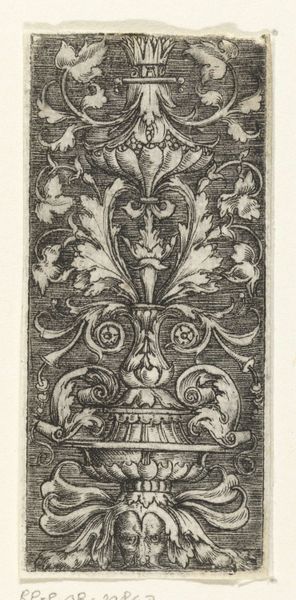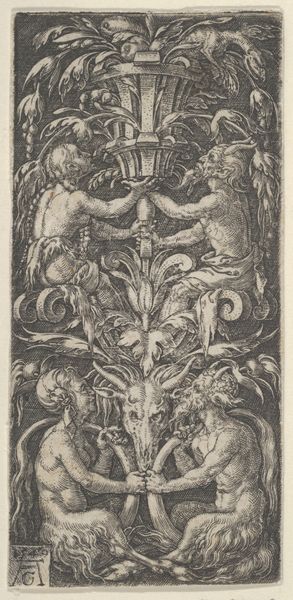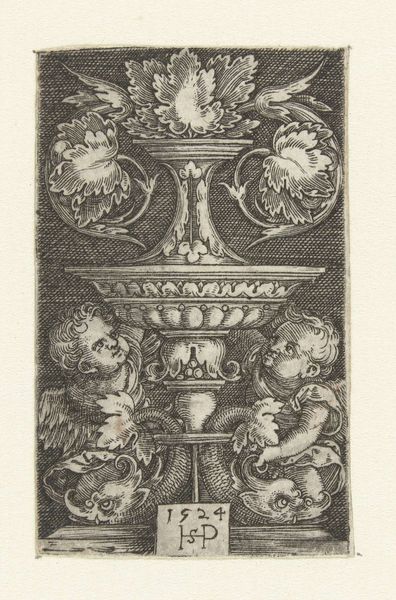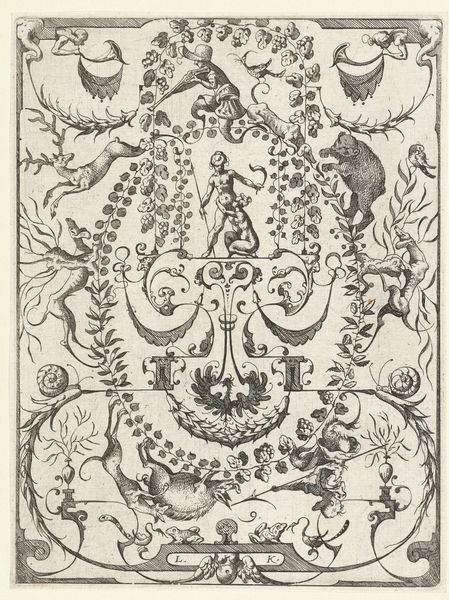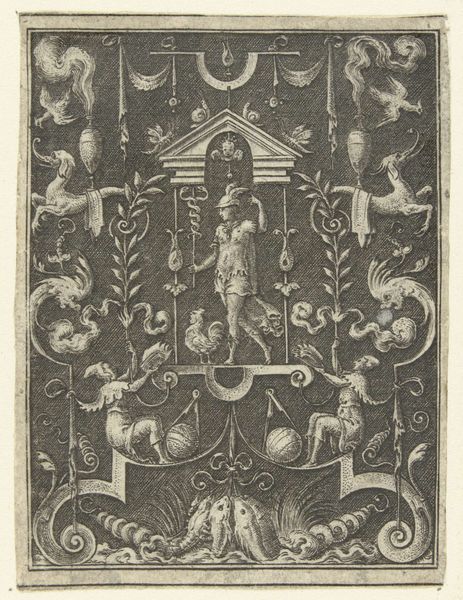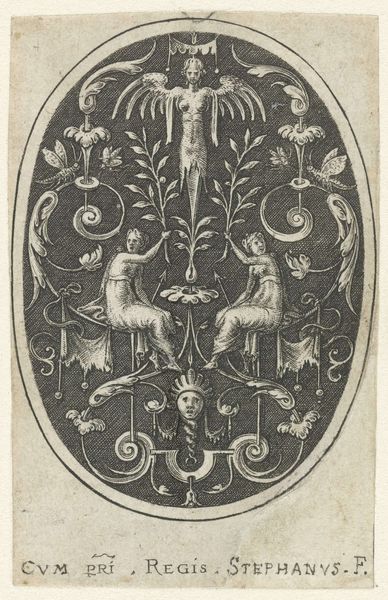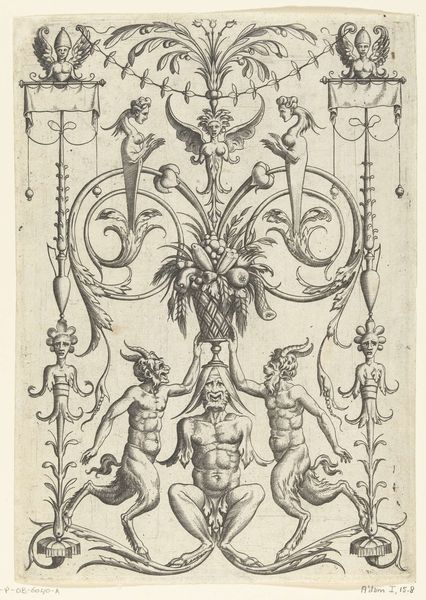
ornament, print, engraving
#
ornament
# print
#
old engraving style
#
11_renaissance
#
geometric
#
line
#
decorative-art
#
engraving
Dimensions: height 90 mm, width 45 mm
Copyright: Rijks Museum: Open Domain
Curator: What strikes me immediately about this engraving, “Ornament met bladranken,” made by Monogrammist DVE sometime between 1510 and 1530, is the palpable tension it seems to contain. Editor: Tension is a very apt description. There's something both organic and rigidly controlled in the linework. The decorative-art approach yields to this play between natural forms, these 'bladranken'—leafy tendrils, I presume—and the hard geometry structuring their arrangement. Curator: Precisely. We see the memory of classical acanthus leaves reshaped through a Northern Renaissance lens, embracing dense, almost claustrophobic patterns. It's a departure from classical ideals towards something…more anxious, perhaps? Editor: The dense hatching definitely contributes to that anxiety. Look how it sculpts volume, creates deep shadows, pushing certain forms forward, others receding. This tonal drama amplifies the ornament’s overall energy and hints at an almost sculptural form, wouldn't you say? The illusion of three dimensions here is extraordinary, especially considering its function. Curator: Yes, its function, which loops back to memory. Ornament during this period served less as mere embellishment, and more as potent symbols—recalling past glories, evoking prosperity, signaling lineage. These intertwined leaves are not just decorative; they whisper stories of growth, heritage, and perhaps, a yearning for permanence. Editor: A visual encoding, certainly. And what’s compelling is that Monogrammist DVE employs what might seem like simple engraving to achieve a complex layering of textures and effects. It’s an object designed, not just to be seen, but felt—an intricate interplay of shadow and light that vibrates on the surface. Curator: Which ultimately allows us to understand how, through repeating these inherited forms, a collective identity can be solidified. A continuous renewal of cultural symbols. Editor: I agree. It really speaks to the capacity of formal structures to become powerful signifiers, to accumulate meaning over time, and the possibilities offered by prints as accessible conduits.
Comments
No comments
Be the first to comment and join the conversation on the ultimate creative platform.
